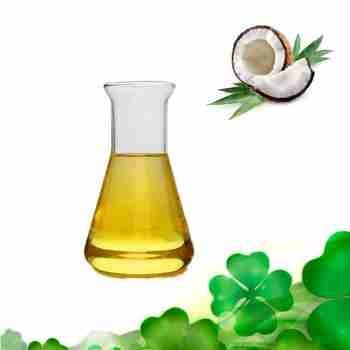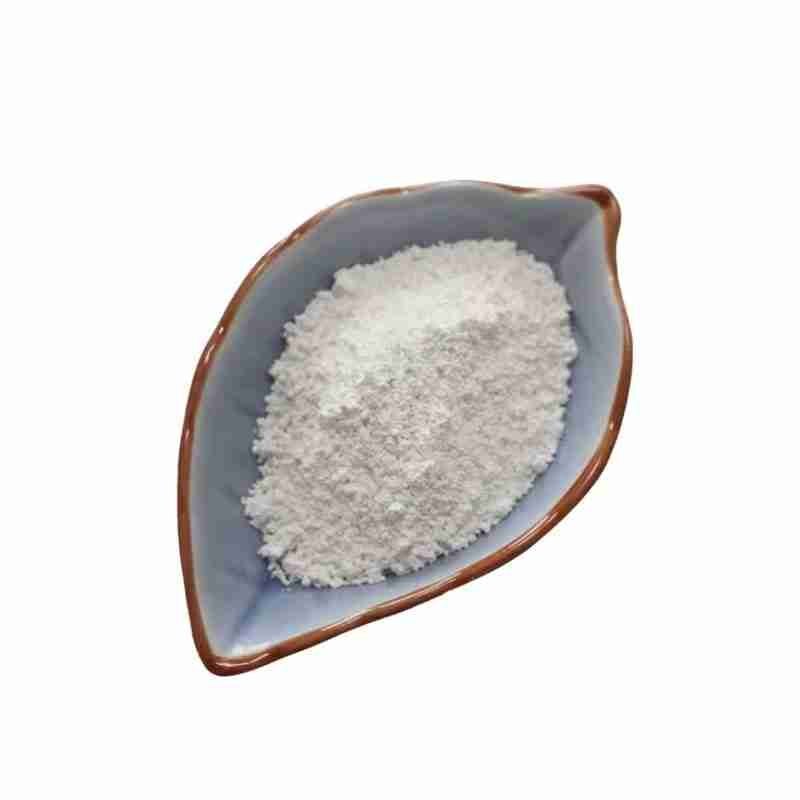D-Glucopyranose, oligomers, C12-14-alkyl glycosides CAS#157707-88-5
Alkyl glucoside, AlkylPolyglucoside(APG). It is formed by the dehydration of glucose hemiacetal hydroxyl group and fatty alcohol hydroxyl group under catalytic action. Alkyl glycoside (APG) is a new type of highly efficient, non-toxic, biodegradable non-ionic surfactant with good surface activity. The raw materials required for its production are glucose and fatty alcohol derived from renewable natural resources. The combination can form the best surfactant at present. Strong foaming power, foam stability, good wettability, excellent compatibility, little irritation to the human body, extremely low toxicity, rapid biodegradation, is the only variety in the world that can be called non-toxic, therefore, APG is known as “world-class” surfactants with its superior performance. Alkyl glycosides can be used in daily chemical industry, textile industry, pesticide industry, food industry, oil production industry and so on.
发送询盘
D-Glucopyranose, oligomers, C12-14-alkyl glycosides CAS#157707-88-5
| D-Glucopyranose, oligomeric, C12-14-alkyl glycosides Chemical Properties |
| EPA Substance Registry System | C12-14 Alkyl-poly-D-glucosides (157707-88-5) |
| D-Glucopyranose, oligomeric, C12-14-alkyl glycosides Basic information |
| Uses |
| Product Name: | D-Glucopyranose, oligomeric, C12-14-alkyl glycosides |
| Synonyms: | C12-14-Alkyl glycosides oligomer;Lauryl Glycoside;D-Glucopyranose, oligomers, C12-14-alkyl glycosides;D-Glucopyranose, oligomeric, C12-14-alkyl glycosides;APG 2000UP |
| CAS: | 157707-88-5 |
| MF: | |
| MW: | 0 |
| EINECS: | 500-395-4 |
| Product Categories: | |
| Mol File: | Mol File |
- 2
- 2-diallylpent-4-en-1-amine
- 4
- 95-16-9
- Ammonium sulfamate
- Benzothiazole
- cas:67889-00-3ح2
- cas:83524-75-8 | pigment black 32
- cas:928836-00-4 | 2
- cas:932745-70-5 | 4
- Chemical Minerals
- Coconut diethanolamide
- Daily Chemicals
- discount
- for sale
- General pvc resin
- hexyl D-glucoside
- in stock
- Lauramidopropyl betaine
- LAURIC ACID MONOETHANOLAMIDE
- Petroleum Additives
- Plasticiser
- Ploymers
- price
- PVC
- quotation
- Raw Materal
- Remove term: Petroleum Additives Petroleum Additive
- SODIUM ETHYL 2-SULFOLAURATE
Related Products
Hexyl D-glucoside is a non-ionic, plant-based surfactant derived from renewable resources such as corn or potato starch. It is recognized for its excellent skin compatibility and mildness, making it a preferred choice for formulations in personal care products, especially those targeting sensitive skin. With its superior solubilizing and foaming capabilities, it enhances the sensory experience of the product without compromising its gentleness. Its eco-friendly profile and biodegradability also align with green chemistry principles, appealing to consumers seeking sustainable product options.
Decyl Glucoside is an eco-friendly, non-ionic surfactant derived from renewable resources. Renowned for its mildness and biodegradability, it is ideal for creating gentle, high-performing cleaning agents in personal care and household products. Its sustainable and effective nature makes it a preferred choice for green formulations.
Chemical Name: Potassium Castorate
CAS No.: 8013-05-6
Molecular Formula: C57H107K3O12
Molecular Weight: 1101.74718
Appearance: Yellow Liquid
Chemical Name: Arabic gum
CAS No.: 9000-01-5
Appearance: powder
Chemical Name: Ammonium Iron(II) Sulfate
Synonyms: Diammonium iron bis(sulphate); iron (ii) ammonium sulfate
CAS No.: 10045-89-3
Molecular Formula: FeH5NO4S
Molecular Weight: 170.95
Coconut diethanolamide is a derivative of coconut fatty acids, where the fatty acid is reacted with diethanolamine to form an amide. This compound is commonly used as an emulsifier and viscosity modifier in personal care products such as shampoos, conditioners, and creams. It imparts a smooth texture and enhances the stability of formulations. Coconut diethanolamide is valued for its ability to improve the foaming properties and skin feel of products, making it a preferred ingredient for creating luxurious and effective formulations in the cosmetics and personal care industry.
Chemical Name: STODDARD SOLVENT
CAS No.: 64742-88-7
Appearance: Colorless or Light Yellow Liquid
Common English name: 5-iodo-2,3-dihydropyridazin-3-one
CAS No.: 825633-94-1
Molecular formula: C4H3IN2O
Molecular weight: 221.98
Sample: Available
Chemical Name: Imazalil Sulfate
CAS No.: 58594-72-2
Molecular Formula: C14H14Cl2N2O.H2SO4
Molecular Weight: 395.26
Appearance: Solid
Chemical Name: Ashwagandha Extract
Synonyms: Withania somnifera, ext.; Withania Somnefera Extract
CAS: 90147-43-6
Appearance: Brown
Sodium Ethyl 2-Sulfolaurate is a surfactant with a unique combination of properties. It is an anionic compound, derived from the sulfonation of ethyl laurate, which is then neutralized with sodium hydroxide. This results in a product that is highly effective in lowering the surface tension of water, making it an excellent wetting agent and emulsifier. It is commonly used in personal care products, detergents, and industrial applications for its foaming and dispersing capabilities. As a mild and biodegradable ingredient, it is favored for its environmental and skin-friendly attributes, ensuring safety and performance in a variety of formulations.
Lauramidopropyl betaine is a mild, biodegradable surfactant commonly used in personal care products and cleaning formulations. It is derived from coconut oil and is known for its foaming and wetting properties, making it ideal for creating rich lathers. This ingredient is particularly favored for its gentleness on the skin and its ability to cleanse without causing irritation, making it suitable for sensitive skin types. It also contributes to the product’s viscosity and stability.


















